Temporal Variation of SOC Enrichment from Interrill Erosion over Prolonged Rainfall Simulations
Abstract
:1. Introduction
2. Experimental Section
2.1. Soil Samples and Preparation
| Clay (%) | Silt (%) | Sand (%) | Stable aggregates greater than 250 µm (%) | SOC (mg·g−1) | Tillage operation | Rotation | Fertilizer | |
|---|---|---|---|---|---|---|---|---|
| CS | 16.80 a 1.38 | 71.47 a 1.76 | 11.50 a 1.00 | 66.85 a 0.47 | 10.9 a 0.05 | Plowing (at least once a year) and other tillage operations | Maize, rape, wheat, grass | Chemical fertilizer and manure |
| OS | 14.39 b 0.52 | 75.84 b 0.56 | 9.77 b 0.38 | 77.76 b 1.87 | 16.9 b 0.10 | Non-plowing, harrowing | Pumpkin, carrot, salad, pea, bean | Sheep manure, horn shavings |
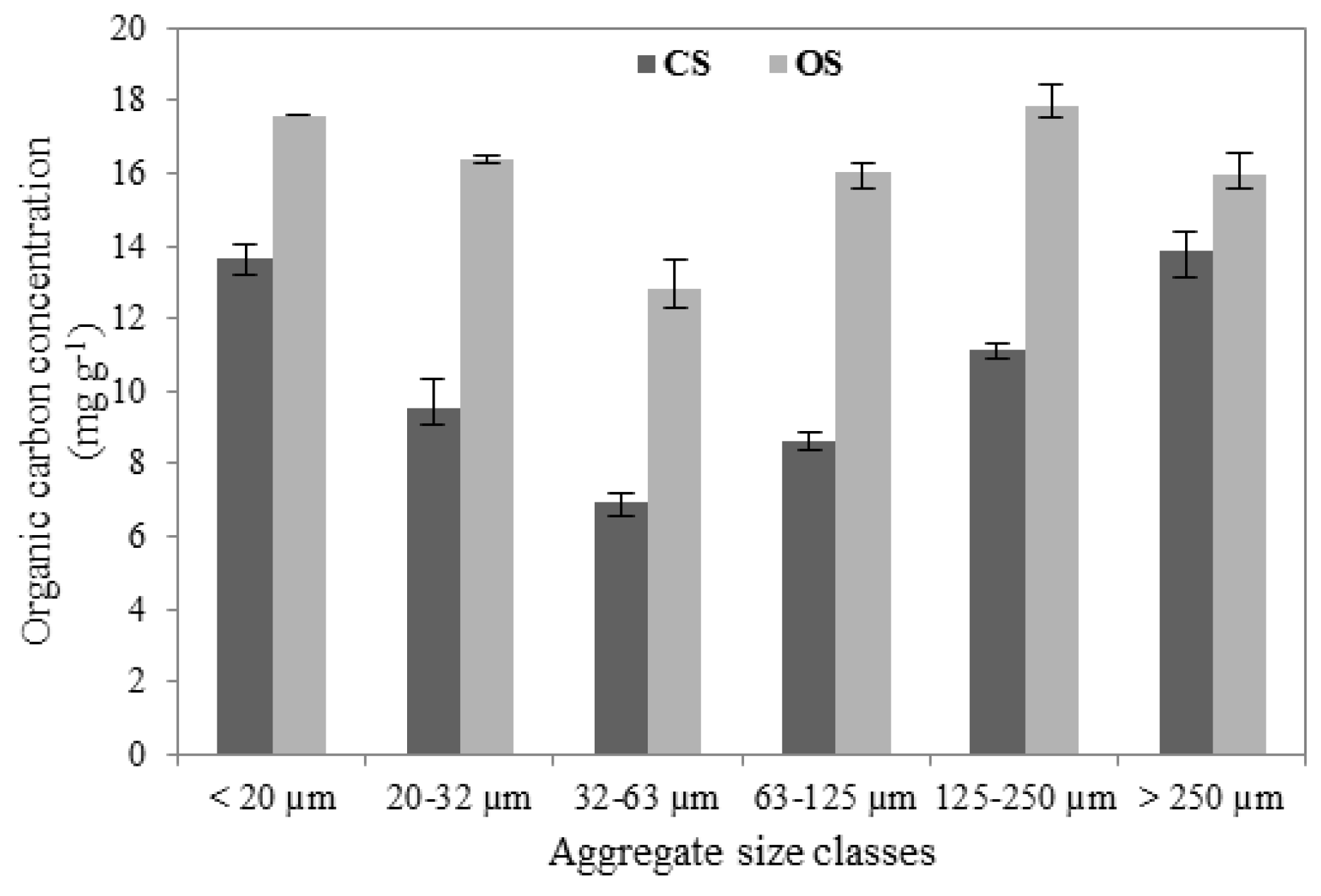
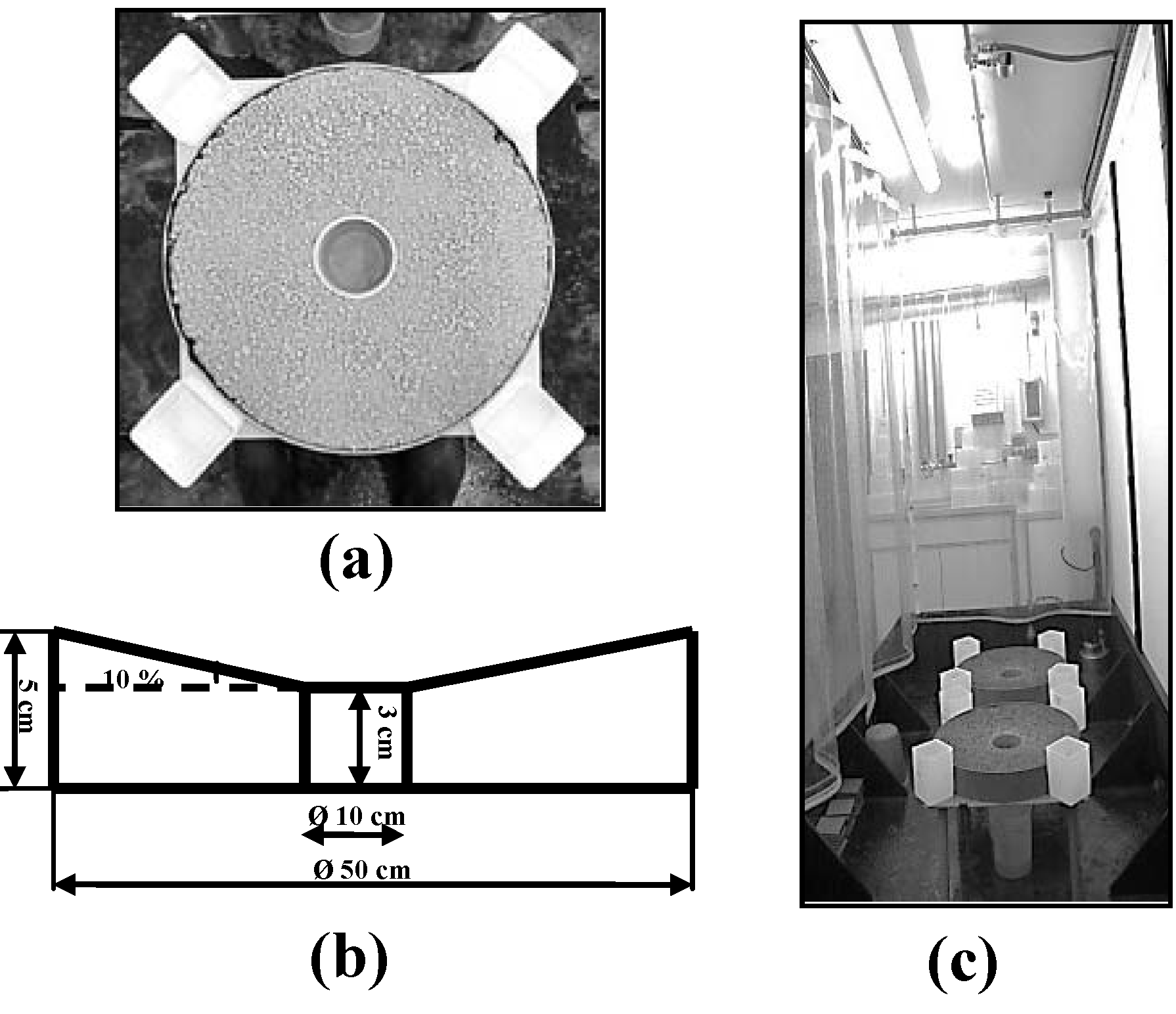
2.2. Rainfall Simulation
2.3. Soil and Sediment Analysis
3. Results
3.1. Erosional Response during Rainfall Time
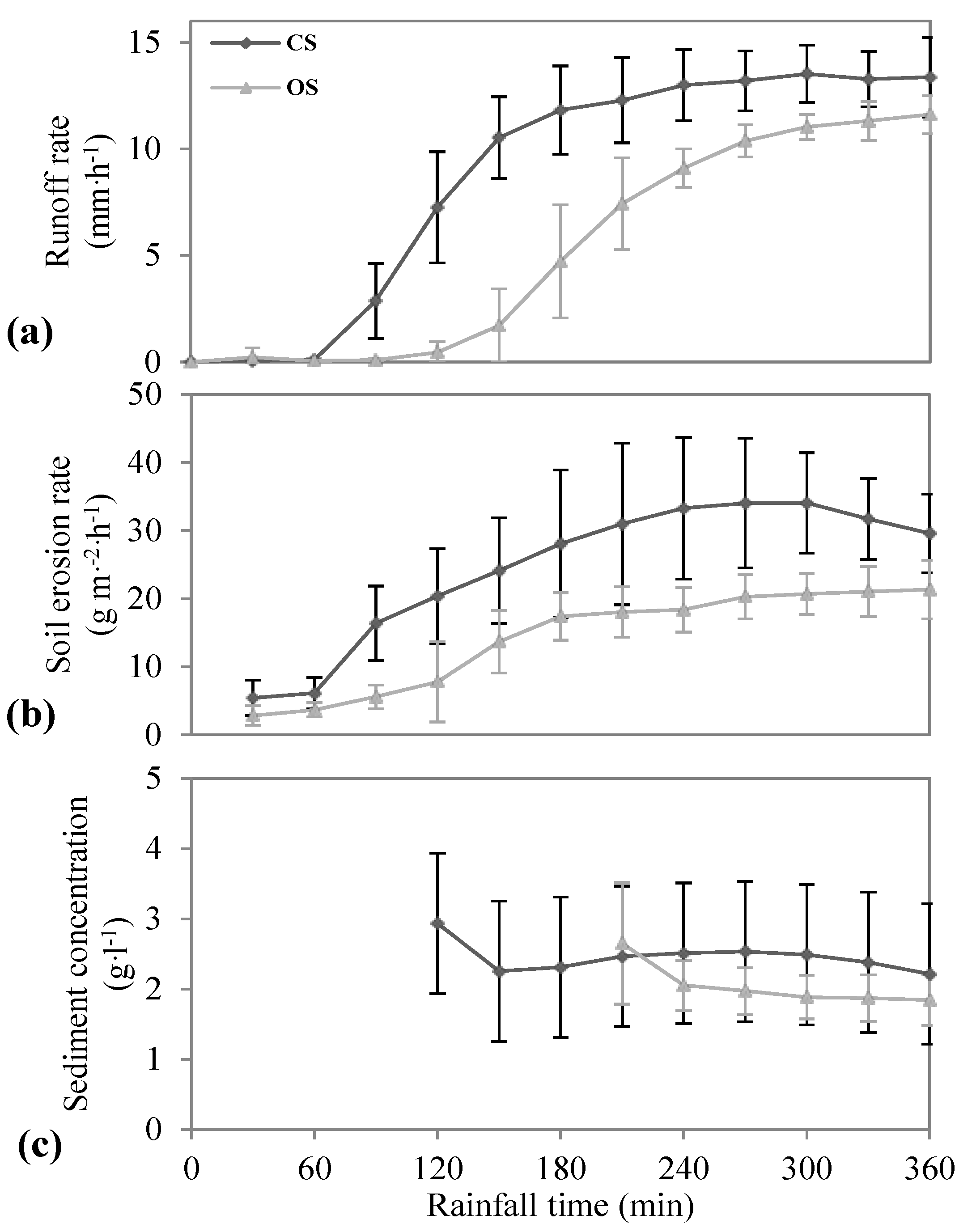
| Soil | Steady state | Total runoff (mm) | Runoff coefficient (%) | Total soil erosion (g) | Soil concentration in runoff (mg·mm−1) | Total SOC erosion (mg) | SOC concentration in runoff (mg·mm−1) | |||
|---|---|---|---|---|---|---|---|---|---|---|
| Time (min) | Runoff rate (mm·h−1 ) | Erosion rate (g·m−2·h−1) | Sediment concentration (g·L−1) | |||||||
| CS | 180 | 12.9 a ± 0.2 | 31.7 a ± 2.5 | 2.4 a ± 0.2 | 55.6 a ± 9.1 | 29.4 a ± 5.0 | 27.4 a ± 7.6 | 484.7 a ± 69.1 | 369.1 a ± 85.1 | 6.6 a ± 0.6 |
| OS | 240 | 10.7 b ± 0.2 | 20.3 b ± 0.5 | 1.9 b ± 0.02 | 34.1 b ± 6.0 | 18.1 b ± 3.0 | 16.1 b ± 3.0 | 476.1 a ± 57.7 | 326.0 a ± 59.1 | 9.6 b ± 1.0 |
3.2. Temporal Variation of ERSOC in Sediment during Rainfall Time
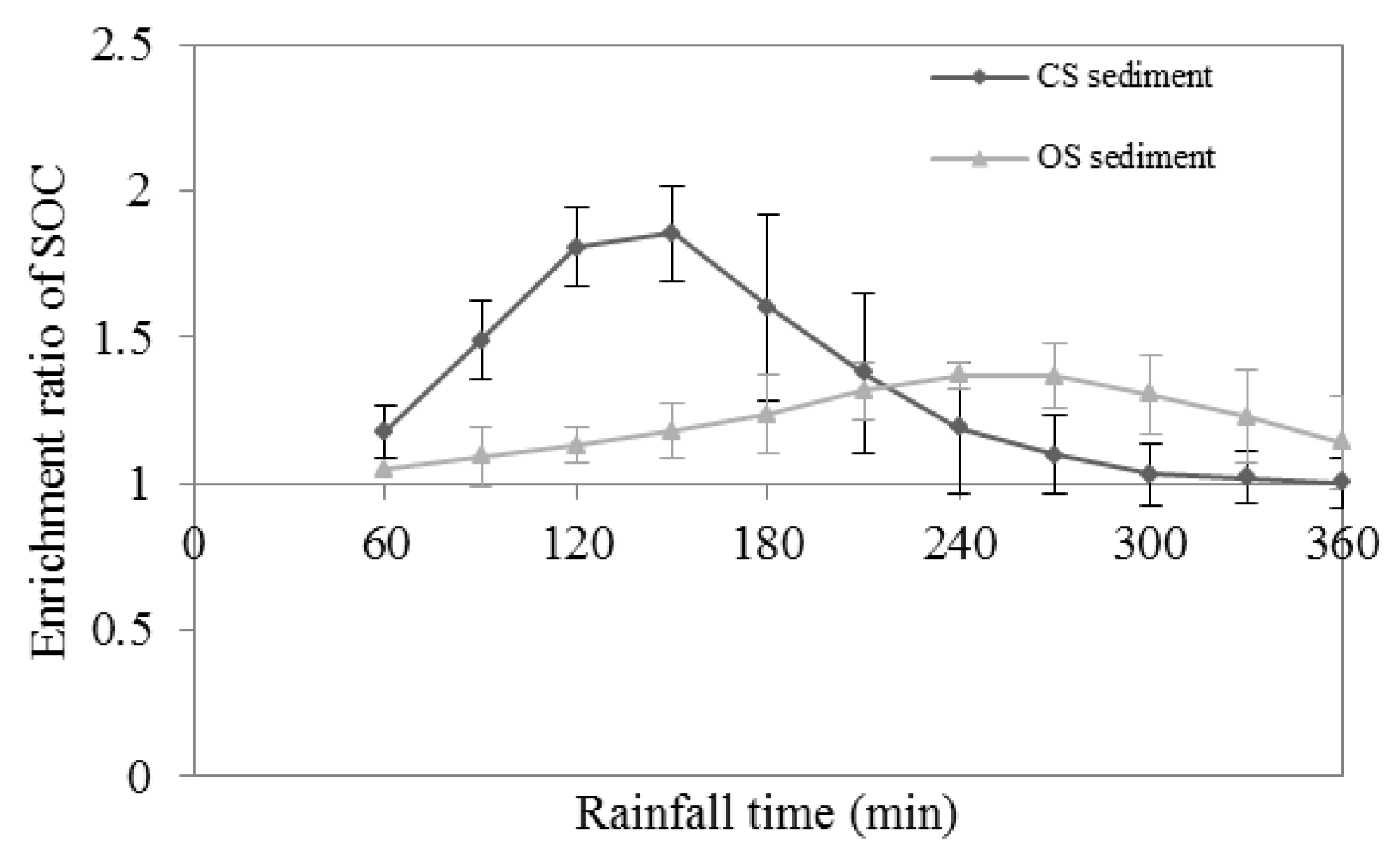
3.3. Interrill Erosional Response and SOC Erosion
3.4. Crust Formation and Surface Properties
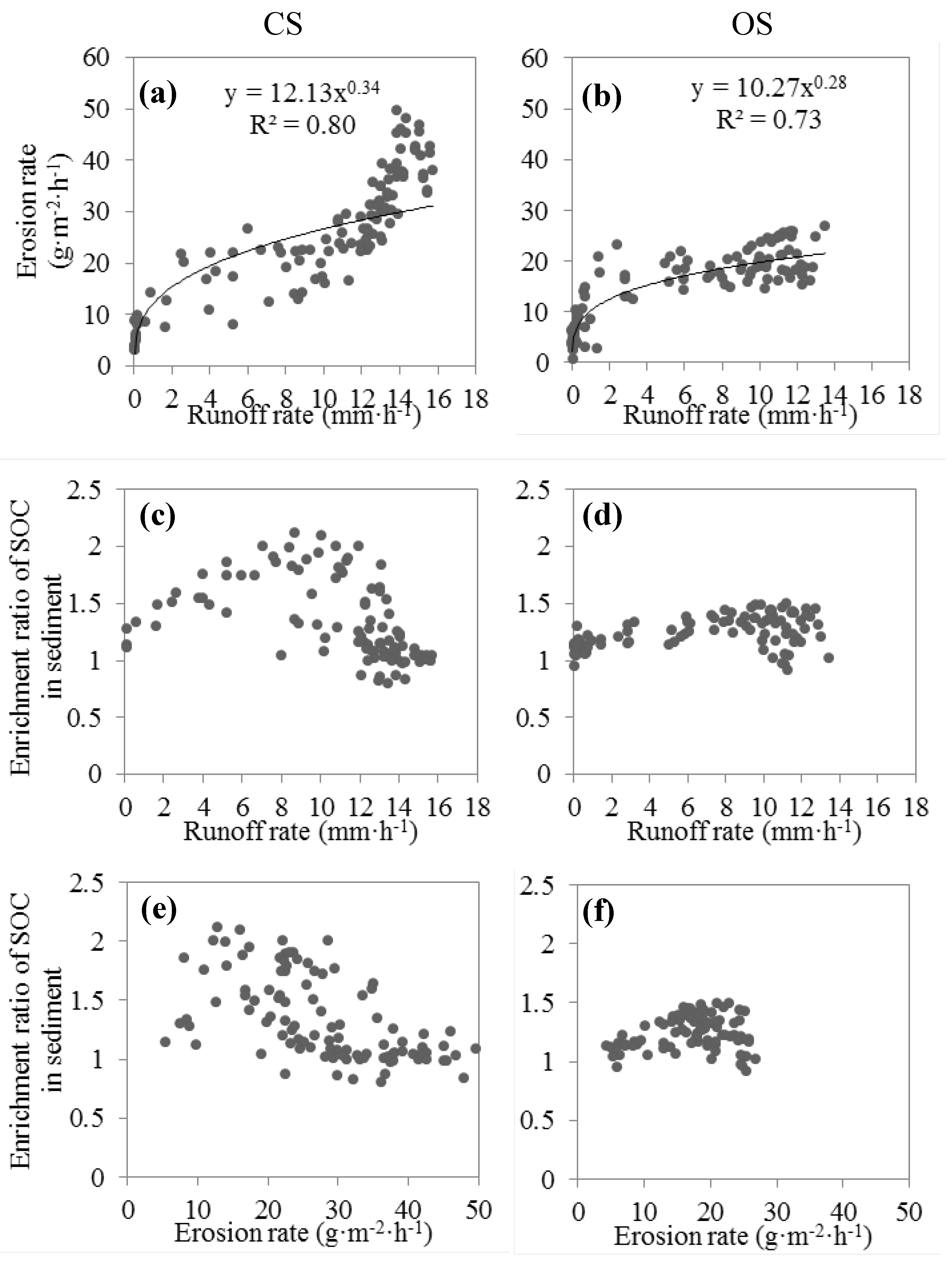
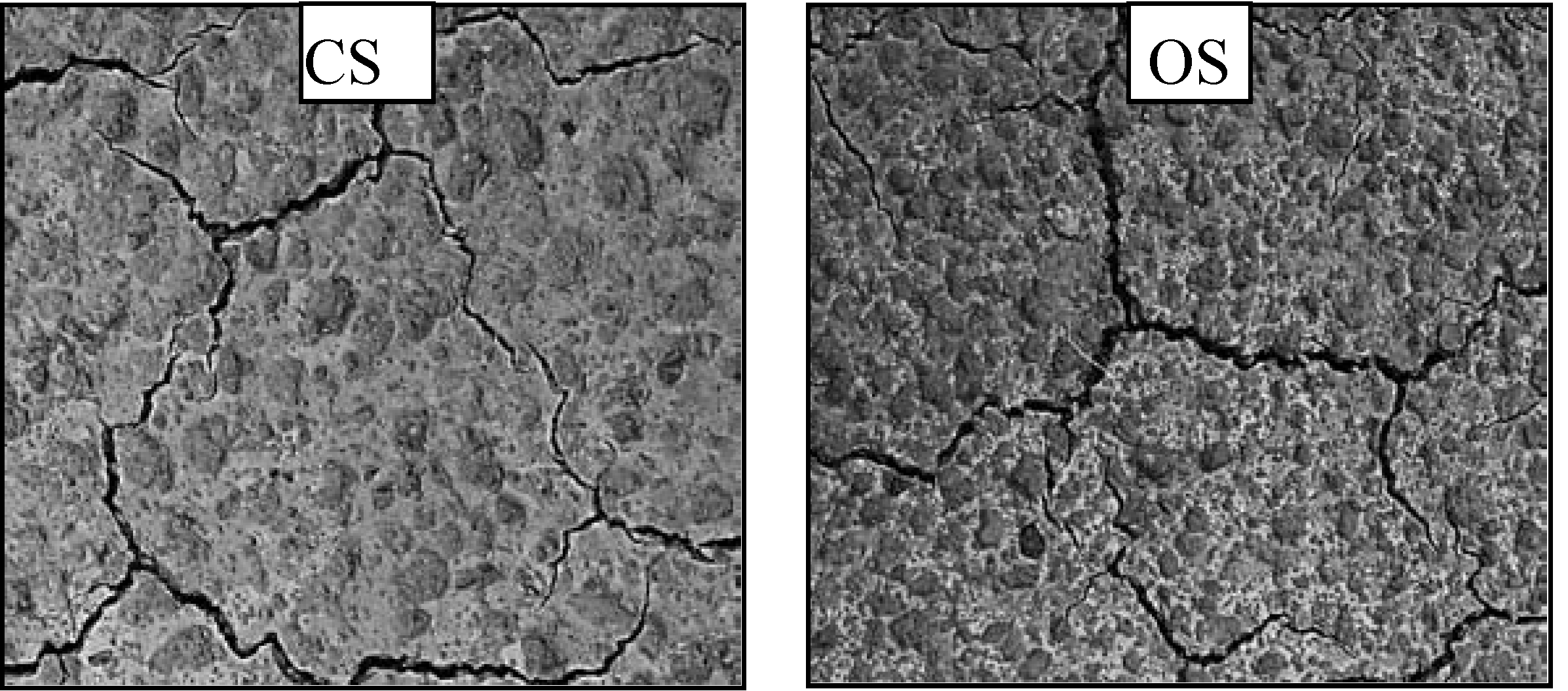
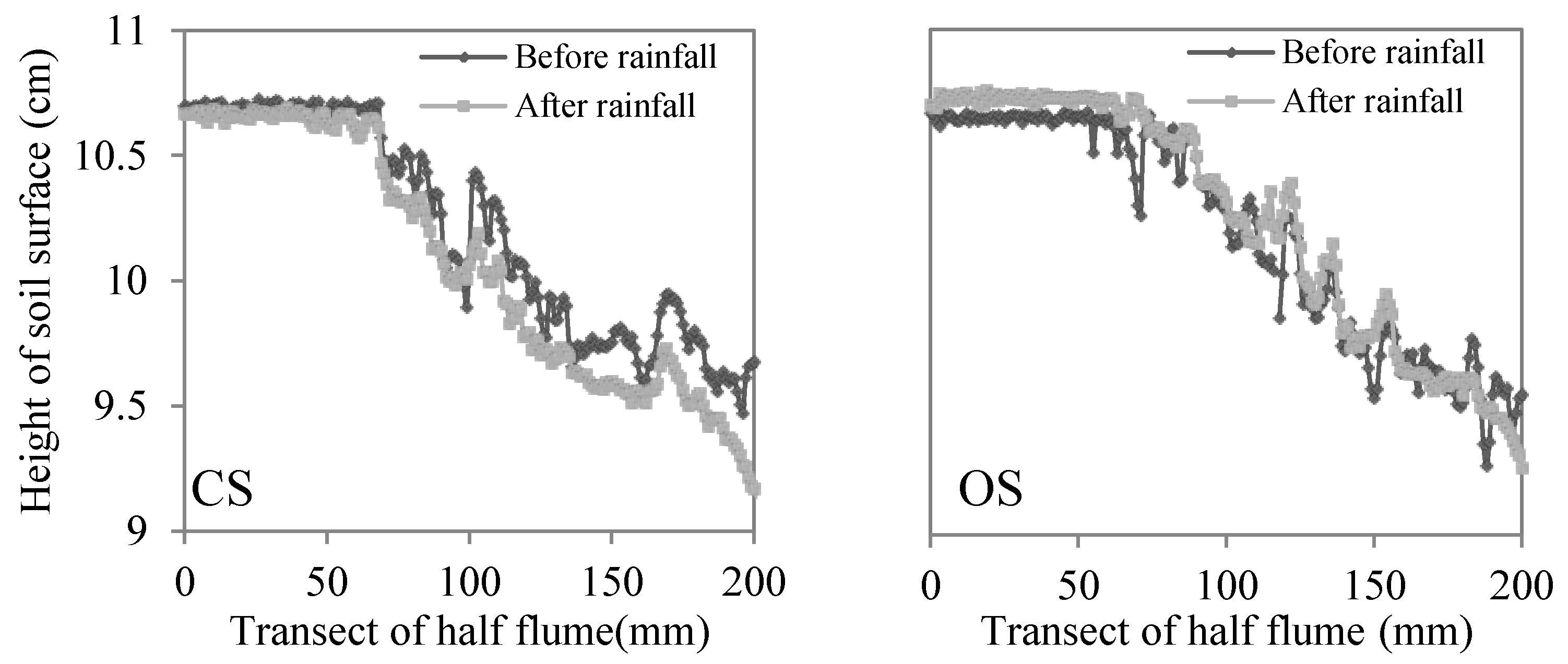

4. Discussion
5. Conclusions
Acknowledgments
Conflicts of Interest
References
- Kuhn, N.J.; Hoffmann, T.; Schwanghart, W.; Dotterweich, M. Agricultural soil erosion and global carbon cycle: Controversy over? Earth Surf. Process. Landf. 2009, 34, 1033–1038. [Google Scholar]
- Parson, A.J.; Abrahams, A.D. Field Investigations of Sediment Removal in Interrill Overland Flow. In Overland Flow; Routledge Taylor & Francis Group: London, UK, 1992; pp. 307–334. [Google Scholar]
- Sharpley, A.N. The Selection erosion of plant nutrients in runoff. Soil Sci. Soc. Am. J. 1985, 49, 1527–1534. [Google Scholar] [CrossRef]
- Quinton, J.N.; Catt, J.A.; Hess, T.M. The selecctive removal of phosphorus from soil: Is event size important? J. Env. Qual. 2001, 30, 538–545. [Google Scholar] [CrossRef]
- Teixeira, P.C.; Misra, R.K. Measurement and prediction of nitrogen loss by simulated erosion events on cultivated forest soils of contrasting structure. Soil Tillage Res. 2005, 83, 204–217. [Google Scholar] [CrossRef]
- Warrington, D.N.; Mamedov, A.I.; Bhardwaj, A.K.; Levy, G.J. Primary particle size distribution of eroded material affected by degree of aggregate slaking and seal development. Eur. J. Soil Sci. 2009, 60, 84–93. [Google Scholar] [CrossRef]
- Lal, R. Soil erosion and the global carbon budget. Environ. Int. 2003, 29, 437–450. [Google Scholar] [CrossRef]
- Van Hemelryck, H.; Fiener, P.; van Oost, K.; Govers, G.; Merckx, R. The effect of soil redistribution on soil organic carbon: An experimental study. Biogeosciences 2010, 7, 3971–3986. [Google Scholar] [CrossRef]
- Kuhn, N.J. Rainfall simulation experiments on crusting and interrill sediment organic matter content on a silt loam from devon. Erde 2010, 141, 283–300. [Google Scholar]
- Polyakov, V.O.; Lal, R. Soil erosion and carbon dynamics under simulated rainfall. Soil Sci. 2004, 169, 590–599. [Google Scholar] [CrossRef]
- Kuhn, N.J. Erodibility of soil and organic matter: Independence of organic matter resistance to interrill erosion. Earth Surf. Process. Landf. 2007, 32, 794–802. [Google Scholar] [CrossRef]
- Schiettecatte, W.; Gabriels, D.; Cornelis, W.M.; Hofman, G. Enrichment of organic carbon in sediment transport by interrill and rill erosion processes. Soil Sci. Soc. Am. J. 2008, 72, 50–55. [Google Scholar] [CrossRef]
- Wang, Z.; Govers, G.; Steegen, A.; Clymans, W.; van den Putte, A.; Langhans, C.; Merckx, R.; van Oost, K. Catchment-scale carbon redistribution and delivery by water erosion in an intensively cultivated area. Geomorphology 2010, 124, 65–74. [Google Scholar] [CrossRef]
- Rodrı́guez Rodrı́guez, A.; Guerra, A.; Arbelo, C.; Mora, J.L.; Gorrı́n, S.P.; Armas, C. Forms of eroded soil organic carbon in andosols of the Canary Islands (Spain). Geoderma 2004, 121, 205–219. [Google Scholar] [CrossRef]
- Kuhn, N.J.; Armstrong, E.K. Erosion of organic matter from sandy soils: Solving the mass balance. CATENA 2012, 98, 87–95. [Google Scholar] [CrossRef]
- Heil, J.W.; Juo, A.S.R.; McInnes, K.J. Soil properties influencing surface sealing of some sandy soils in the Sahel. Soil Sci. 1997, 162, 459–469. [Google Scholar] [CrossRef]
- Ramos, M.C.; Nacci, S.; Pla, I. Soil sealing and its influence on erosion rates for some soils in the Mediterranean Area. Soil Sci. 2000, 165, 398–403. [Google Scholar] [CrossRef]
- Kuhn, N.J.; Bryan, R.B. Drying, soil surface condition and interrill erosion on two Ontario soils. CATENA 2004, 57, 113–133. [Google Scholar] [CrossRef]
- Darboux, F.; le Bissonnais, Y. Changes in structural stability with soil surface crusting: Consequences for erodibility estimation. Eur. J. Soil Sci. 2007, 58, 1107–1114. [Google Scholar] [CrossRef]
- Palis, R.G.; Okwach, G.; Rose, C.W.; Saffigna, P.G. Soil erosion processes and nutrient loss. 1. The interpretation of enrichment ratio and nitrogen loss in runoff sediment. Aust. J. Soil Res. 1990, 28, 623–639. [Google Scholar] [CrossRef]
- Jacinthe, P.-A.; Lal, R.; Owens, L.B.; Hothem, D.L. Transport of labile carbon in runoff as affected by land use and rainfall characteristics. Soil Tillage Res. 2004, 77, 111–123. [Google Scholar] [CrossRef]
- Martínez-Mena, M.; López, J.; Almagro, M.; Albaladejo, J.; Castillo, V.; Ortiz, R.; Boix-Fayos, C. Organic carbon enrichment in sediments: Effects of rainfall characteristics under different land uses in a Mediterranean area. CATENA 2012, 94, 36–42. [Google Scholar] [CrossRef]
- Le Bissonnais, Y.; Cerdan, O.; Lecomte, V.; Benkhadra, H.; Souchère, V.; Martin, P. Variability of soil surface characteristics influencing runoff and interrill erosion. CATENA 2005, 62, 111–124. [Google Scholar] [CrossRef]
- Walker, P.H.; Kinnell, P.I.A.; Patricia, G. Transport of a non-cohesive sand mixture in rainfall and runoff experiments. Soil Sci. Soc. Am. J. 1978, 42, 793–801. [Google Scholar] [CrossRef]
- Hairsine, P.B.; Sander, G.C.; Rose, C.W.; Parlange, J.-Y.; Hogarth, W.L.; Lisle, I.; Rouhipour, H. Unsteady soil erosion due to rainfall impact: A model of sediment sorting on the hillslope. J. Hydrol. 1999, 220, 115–128. [Google Scholar] [CrossRef]
- Kinnell, P.I.A. Raindrop-induced saltation and the enrichment of sediment discharged from sheet and interrill erosion areas. Hydrol. Process. 2012, 26, 1449–1456. [Google Scholar] [CrossRef]
- Chen, Y.; Tarchitzky, J.; Brouwer, J.; Morin, J.; Banin, A. Scanning electron microscope observation on soil crusts and their formation. Soil Sci. 1980, 130, 49–55. [Google Scholar] [CrossRef]
- Slattery, M.C.; Bryan, R.B. Laboratory experiments on surface seal development and its effect on interrill erosion processes. J. Soil Sci. 1992, 43, 517–529. [Google Scholar]
- Le Bissonnais, Y. Aggregate stability and assessment of soil crustability and erodibility: I. Theory and methodology. Eur. J. Soil Sci. 1996, 47, 425–437. [Google Scholar] [CrossRef]
- Moore, D.C.; Singer, M.J. Crust formation effects on soil erosion processes. Soil Sci. Soc. Am. J. 1990, 54, 1117–1123. [Google Scholar] [CrossRef]
- Kuhn, N.J.; Armstrong, E.K.; Ling, A.C.; Connolly, K.L.; Heckrath, G. Interrill erosion of carbon and phosphorus from conventionally and organically farmed Devon silt soils. CATENA 2012, 91, 94–103. [Google Scholar] [CrossRef]
- Hu, Y.; Fister, W. Soil Organic Carbon Erosion from Two Silty Loam Soils—A Laboratory Rainfall Experiment. In Proceedings of the Session GM 4.2 “Erosion and Terrestrial Carbon Cycle”, in General Assembly of European Geoscience Union, Vienna, Austria, 03–08, April, 2011.
- Nimmo, J.R.; Perkins, K.S. Aggregate Stability and Size Distribution. In Soil Science Society of America; Dane, J.H., Topp, G.C., Eds.; Methods of Soil Analysis: Madison, WI, USA, 2002; Volume Part 4-Physical methods; pp. 317–328. [Google Scholar]
- Hu, Y.; Xiao, L.; Fister, W.; Kuhn, N.J. The effects of aggregation onto the fate of eroded organic carbon. (unpublished).
- Hu, Y.; Fister, W.; Rüegg, H.R.; Kinnell, P.I.A.; Kuhn, N.J. The Use of Equivalent Quartz Size and Settling Tube Apparatus to Fractionate Soil Aggregates by Settling Velocity. In Geomorphology Techniques (Online Edition); British Society for Geomorphology: London, UK, 2013; p. Section 1.1.1. [Google Scholar]
- MeteoSwiss. Monthly total precipitation during April, May, and June at Station Arisdorf (47°30' N, 7°46' E) near Möhlin from 1985 to 2012. MeteoSwiss, Federal Office of Meteorology and Climatology: Zürich, Switzerland.
- Borselli, L.; Torri, D.; Poesen, J.; Sanchis, P. Effects of water quality on infiltration, runoff and interrill erosion processes during simulated rainfall. Earth Surf. Process. Landf. 2001, 26, 329–342. [Google Scholar] [CrossRef]
- Wendt, R.C.; Alberts, E.E.; Hjelmfelt, A.T. Variability of runoff and soil loss from fallow experimental plots. Soil Sci. Soc. Am. J. 1986, 50, 730–736. [Google Scholar] [CrossRef]
- Bryan, R.B.; Luk, S.H. Laboratory experiments on the variation of soil erosion under simulated rainfall. Geoderma 1981, 26, 245–265. [Google Scholar] [CrossRef]
- Hu, Y.; Fister, W.; Kuhn, N.J. Inter-replicate variability and duration-related systematic variability in organic carbon erosion modeling. (unpublished).
- Anderson, K.; Kuhn, N.J. Variations in soil structure and reflectance during a controlled crusting experiment. Int. J. Remote Sens. 2008, 29, 3457–3475. [Google Scholar] [CrossRef]
- Barthes, B.; Roose, E. Aggregate stability as an indicator of soil susceptibility to runoff and erosion; validation at several levels. CATENA 2002, 47, 133–149. [Google Scholar] [CrossRef]
- Singer, M.J.; Le Bissonnais, Y. Importance of surface sealing in the erosion of some soils from a mediterranen climate. Geomorphology 1998, 24, 79–85. [Google Scholar] [CrossRef]
© 2013 by the authors; licensee MDPI, Basel, Switzerland. This article is an open access article distributed under the terms and conditions of the Creative Commons Attribution license (http://creativecommons.org/licenses/by/3.0/).
Share and Cite
Hu, Y.; Fister, W.; Kuhn, N.J. Temporal Variation of SOC Enrichment from Interrill Erosion over Prolonged Rainfall Simulations. Agriculture 2013, 3, 726-740. https://doi.org/10.3390/agriculture3040726
Hu Y, Fister W, Kuhn NJ. Temporal Variation of SOC Enrichment from Interrill Erosion over Prolonged Rainfall Simulations. Agriculture. 2013; 3(4):726-740. https://doi.org/10.3390/agriculture3040726
Chicago/Turabian StyleHu, Yaxian, Wolfgang Fister, and Nikolaus J. Kuhn. 2013. "Temporal Variation of SOC Enrichment from Interrill Erosion over Prolonged Rainfall Simulations" Agriculture 3, no. 4: 726-740. https://doi.org/10.3390/agriculture3040726




